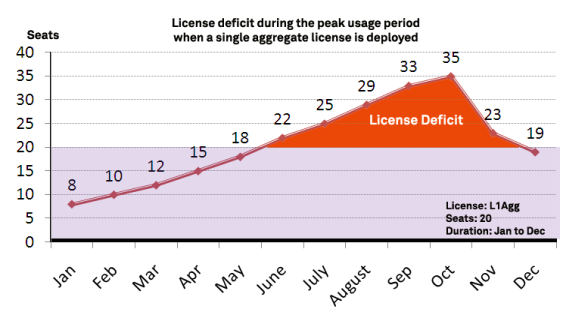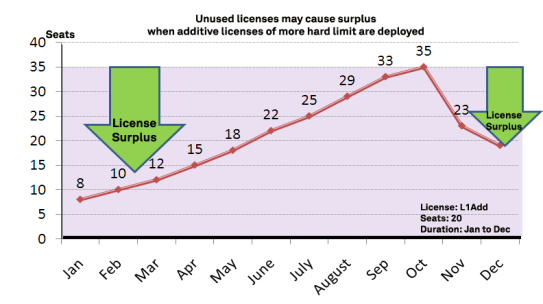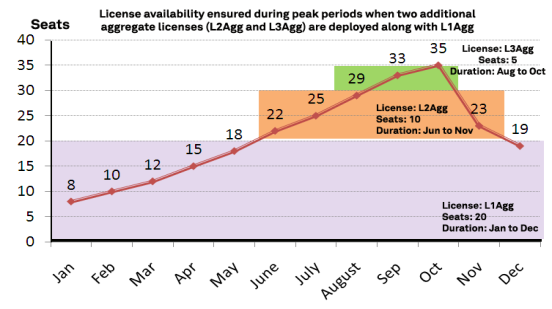Peak Usage Licensing Scenario
The concept of license aggregation allows vendors to address a recent evolution in licensing, known as Peak Usage licensing. Peak Usage licensing is often treated as an extension to traditional subscription-based models, driven by the need to address a more dynamic nature for application demand.
A typical example is when an application is used in a project orientated way. It is common for the seat capacity requirements to fluctuate significantly from one period to the next as the project changes phase. When the project is in its early stages, the number of seats required is likely to be low, but as the project gains momentum, additional seats will be required.
In the diagram below, the graphical line depicts the license (seat) demand pattern for a year. This requirement is primarily met by the license L1Agg, which offers a maximum of 20 seats. However, between June and November, the license demand far exceeds the supply during peak periods.

|
As a precautionary solution to this problem, the software vendor may choose to deploy licenses with overtly generous hard limits. However, this approach is less practical since it:
>Requires more budget commitment. End customers are forced to purchase more licenses than they anticipate needing.
>Creates a license surplus during non-peak periods—exposing a gap between software usage requirements and fulfillment.
In the diagram below, you can see that when an additive license with a higher hard limit (35 seats) is deployed, the balance between license demand and supply is only achieved during the month of October. Elsewhere, licenses remain unused for most of the time.

Aggregate licenses offer a better approach to address this problem. Often, the increase in demand is anticipated, so a delivered license can consist of a mix of current aggregate licenses along with ones which start in the future. When deployed, these licenses become active on their respective start dates and automatically provide additional licenses to meet the planned increases in demand.
In the diagram below, note that the new aggregate license L2Agg accommodates the rising license demand between June and August. The shorter term L3Agg license ensures that the top of the peak period is covered.

See also:
